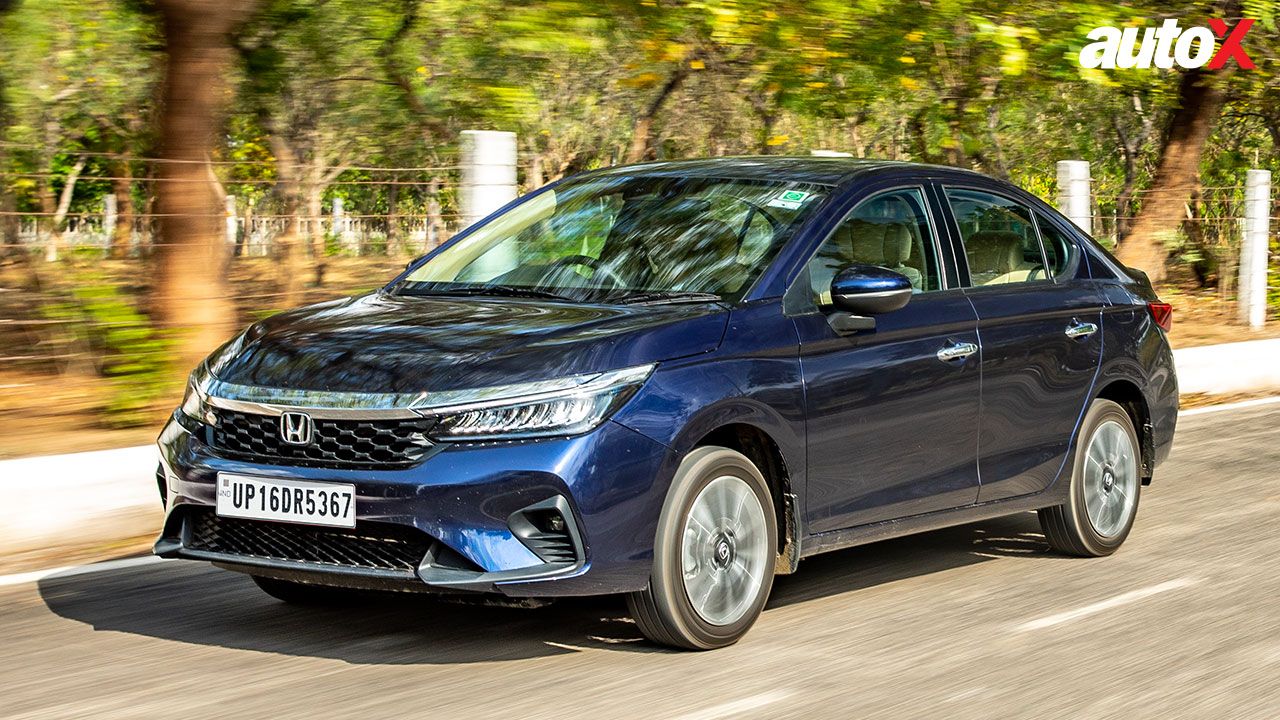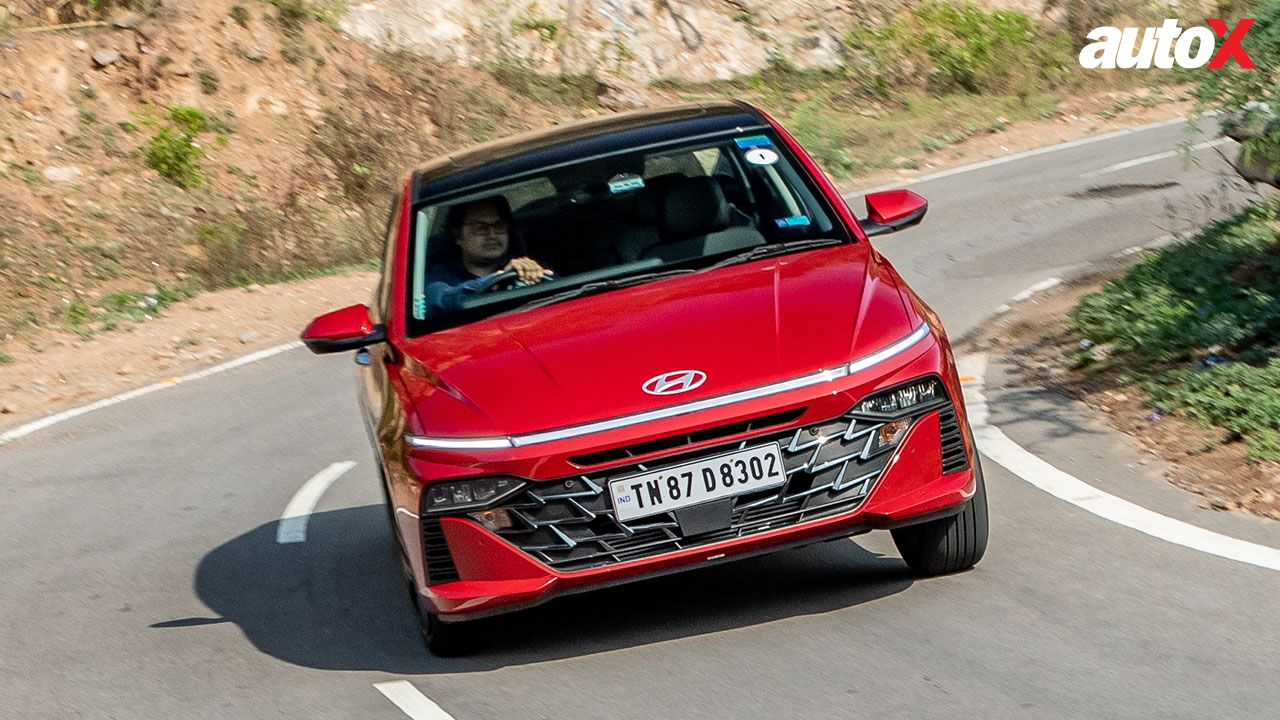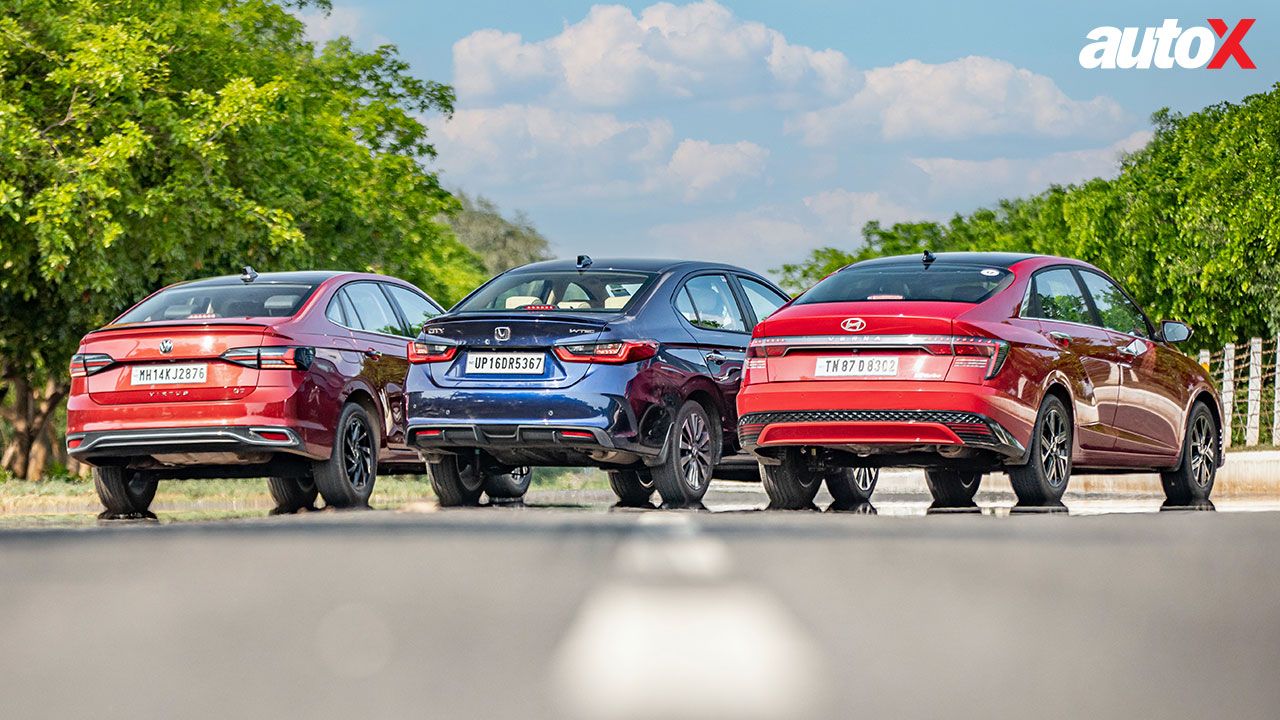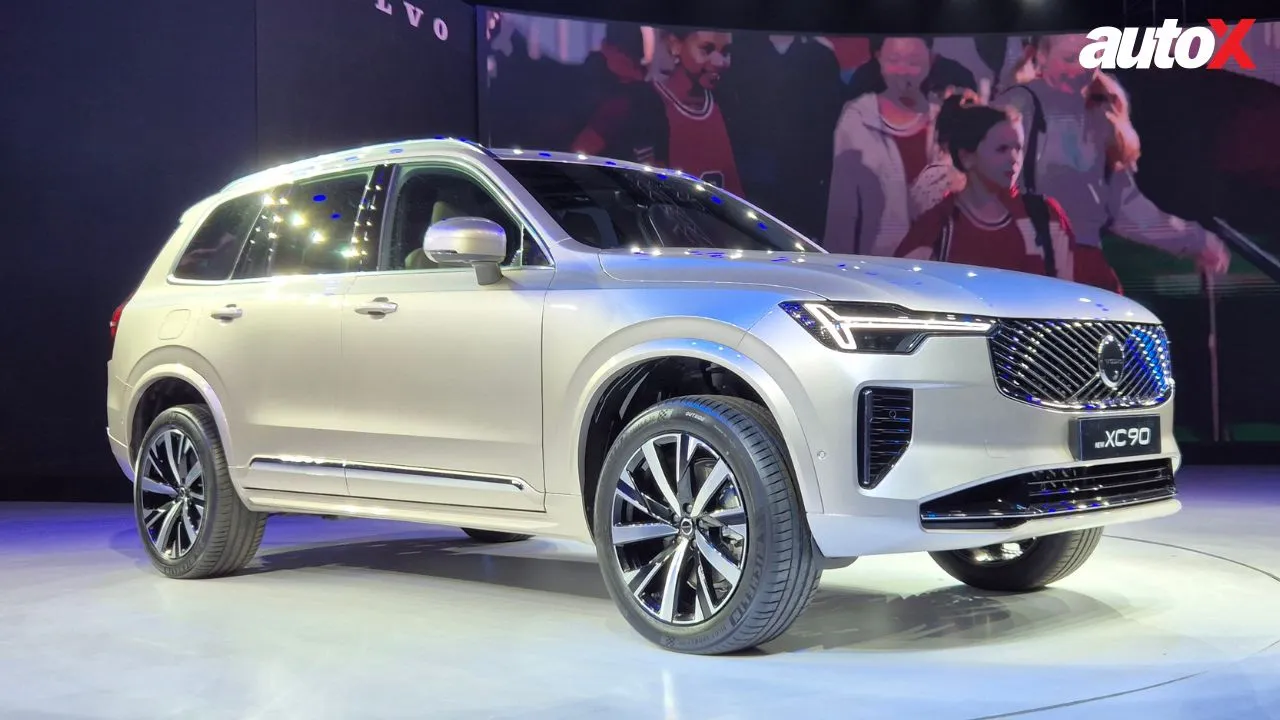Korean Coronation: Hyundai Verna vs Honda City vs Volkswagen Virtus
There’s a new contender in town, vying for the top spot in the mid-size sedan space. So, are we heading for another coronation ceremony? Before I began writing this story, I had to double-check the calendar to confirm that we are indeed in 2023.

Before I began writing this story, I had to double-check the calendar to confirm that we are indeed in 2023. The reason for this seemingly unnecessary precaution is quite simple. You see, the three sedans that we have with us not only come with a promise – a promise of offering comfort, practicality, a sporty driving experience, and everything else that we expect from a sedan – but have also managed to rediscover their popularity from the past. They can potentially overshadow the similarly-priced SUV segment. How exactly will that happen? Hear me out.
The cars that you see on these pages are the Hyundai Verna, Volkswagen Virtus, and Honda City. Some of you might notice the absence of the Skoda Slavia, while others would want the Maruti Suzuki Ciaz to be here as well. As for the Slavia, well, media cars aren’t always available, and the Virtus does a good enough job of standing in for it. In fact, they are virtually the same car underneath. As for the Maruti Suzuki Ciaz, it’s simply too old to stand next to these cars with a straight face. The entire segment has moved on, and the Ciaz just doesn’t really have what it takes to rival these cars anymore. Now, as all of that is out of the way, the question is – which one of these cars is the best bet in the segment?
Verna vs Virtus vs City: Power Talk
The Verna is essentially the reason for this comparison. In short, it has massively improved in all aspects, but its biggest weapon is the turbo-petrol engine underneath its bonnet. Hyundai engineers have taken a solid aim at the Virtus-Slavia combo and fired an ICBM right where it hurts – at their hearts. The car we tested was a manual, and for me, it was love at first sight. Carmakers have started prioritising automatic transmissions, which is a good thing, but it’s a manual transmission that speaks to the soul of an enthusiast. I still think that the manual transmission has enough to offer that it should at least be offered as an option. Even Volkswagen learnt this the hard way – it recently introduced a manual transmission option for the Virtus with the 1.5 TSI engine. I have driven that combo before in the Slavia, and it was one of the most epic driving experiences ever!

Coming back to the Verna, its engine makes slightly more power and marginally more torque than that of the Virtus, and it does that without any fancy race-derived tech. The City isn’t even in the comparison at this point, but more on that later. Step on the gas in first or second gear, and the Verna’s tacho needle dashes towards the redline like there is no tomorrow. There is a slight lag under 1,500rpm, but after that, it’s like a dream for the racer in you. Turbo-petrol engines are not new. They have been around for a few years now, and manufacturers have been very aggressive in setting new limits for them. When the Volkswagen Group debuted its 1.5 TSI powertrain, I was really impressed by it. But a couple of years later that feeling of amazement has disappeared like happiness on a Monday morning. The Verna makes more power, and while the difference wouldn’t be apparent when you drive them back to back for the first time, it would become clear when you floor them at a standstill and see the Verna immediately edge past the Virtus.
To be fair to the Virtus, it’s still a quick car. However, its greatest strength is what may be a problem for it here. You see, the Virtus’ 1.5 TSI engine is super smooth, and even though it makes a good amount of power, all of it is supplied in a very linear fashion, which after a few bursts of acceleration begins to seem mundane. The Verna’s turbo-petrol motor, on the other hand, keeps things interesting, as the power delivery is slightly punchy in the mid-range, making it more exciting than the Virtus. In fact, I will go as far as to say that I have had more fun driving the Honda City with its manual transmission (despite its low power and torque output) than the Virtus, when we had it over for our ADAS test last month.
The City we had for this test was a CVT automatic. And while it did dull the experience of driving it a bit, it also made me rediscover the sublime driving experience that the City continues to offer, even if it’s a bit overshadowed by the competition. The Verna and the Virtus both need to be in the right gear to make haste at city speeds. And while overall, they are quicker than the City, you’d still need the transmission to be in a lower gear for a burst of acceleration. And that’s where the City shines. Its 1.5-litre naturally aspirated engine has a limited amount of torque down low in the rev range, but the CVT is tuned so that it allows you to progress in a more brisk fashion. In the real world, I honestly feel that the City is the quickest car if you want to exploit an opening in traffic.
Verna vs Virtus vs City: Being Sensible
Now, even if you are an enthusiast, you wouldn’t want to push these cars to their limits all the time. After all, these are family cars and are required to be sensible as well. The Verna, once again, surprised me here. You see, as much as I love power, I am more impressed by an engine’s ability to use the least amount of fuel to make the most power. After all, petrol prices have been hovering around the century mark for quite some time now, and you never know when the next big spike might come. Now, one might think that just because the Verna makes so much power, it won’t be fuel efficient. Well, that couldn’t be further from the truth. While driving with a light foot, the Verna returned an average fuel efficiency of 21km/l! That’s insane! – something I have never experienced before from a similar engine. True, it was in Eco mode, but the Eco mode in the Verna is not an unusable setting – in fact, I preferred using it all the time, especially while driving in the city. One thing I should add here is that the Verna’s manual transmission has taller gearing which helps it return such a good fuel efficiency number.

The Virtus could huff and puff, but it would never be able to get near that figure. Even with its cylinder de-activation technology and everything, the Virtus requires you to be strict with your throttle inputs, and honestly, it’s not a very pleasant way to drive. It feels like you have a gun to your head all the time, and that is because it builds up speeds so effortlessly that it’s hard to drive it slow. That feeling simply doesn’t exist in the Verna. When driving the latter, I often took liberties of being a bit generous with my throttle, but it was never to the detriment of the fuel efficiency figure on the instrument cluster.
As for the Honda, it’s like the Verna and for good reason. If you drive it sedately, it is one of the most delightful sedans to drive. But the one thing that I absolutely do not like about this car is the extent to which its engine can get noisy. Now, this engine likes to be revved, but the more you rev it, the louder it gets inside the cabin. You almost feel like Honda has skimped on insulation here, which does feel a bit odd. For decades, the objective of the Honda City has always been to deliver a premium experience, and it does that, except for the engine noise.
Verna vs Virtus vs City: Corner Talk
When I think of a sedan, the first thing that comes to mind is a low seating position. For me, this is the biggest advantage, as it allows the driver to have a better understanding of what the chassis is doing, especially around bends. This has been a Volkswagen-dominated territory for many years, and honestly, things aren’t all that different now. The Virtus’s steering feels the most direct of the lot and offers sharp turn-ins. Regardless of how you throw it around a corner, it’s hard to get it to misbehave. Even the brakes are the sharpest, and they intervene progressively. In fact, it feels too surefooted, and I wish it had a little more playfulness.
Now, the Hyundai Verna solves that problem to an extent. You can always feel minor corrections in the Verna’s steering, although the brakes are a bit too sharp in the early braking phase. As for the City, the chassis is simply mind-blowing. However, its softly set up suspension does limit its potential. It is undoubtedly fun around corners but not the most precise. While the Verna has a more balanced ride quality, the Virtus has the stiffest setup of the three. So, in terms of comfort, the City is your best bet, followed by the Verna and then the Virtus. In terms of sporty handling, however, simply reverse the order.
Verna vs Virtus vs City: Sofa Much?

The age of SUVs has spoilt us all, as we now expect sedans to offer large, roomy cabins. And interestingly, all three sedans on our list do indeed offer a similar proposition. Now, there are certain similarities between the Hyundai Verna and Volkswagen Virtus, but that doesn’t mean that they offer the same experience. Let me explain. Both the Verna and the Virtus have an all-black cabin. In the Virtus, the seats are heavily-bolstered, which keeps you locked in your seats whether you are driving or being driven around. While this is great for the front row, it’s not so much for those in the rear seat. The seats in the rear are scooped at both ends, which makes seating three people at the back a task, despite the fact that there is decent legroom and knee room. The City tells a similar story, although the bolstering is not that aggressive, and it’s easier to fit three people comfortably in the back. In terms of space inside the cabin, I would say it’s just a notch behind the Virtus. However, it is the Verna that is the most spacious of the three. The seats are not heavily bolstered and the rear bench is a genuine three-seater, and there is a lot of room to relax your legs as well. This used to be a weak point for the Verna, but Hyundai has turned it around, so much so that it now leads the segment in this regard.
All three get two screens each – one for the instrument cluster and the other one for the infotainment system. Let’s begin with the City, for once you check out the other two, you would not want to come back to it. The City’s instrument cluster looks analogue, but it’s not – it’s neatly designed to mimic an analogue cluster. Frankly, it’s not as fetching as the other two, but if you love old-school designs, chances are you will appreciate the City’s instrument cluster. The infotainment screen is another story. Compared to its rivals, the touchscreen of the City feels like it is 10 years old. The positioning is also not great, as the view is a bit marred from the driver’s seat. Even the camera resolution is not the greatest – it’s okay to use but for all intents and purposes, the City comes third by a margin in this test. Both the Virtus and Verna have a proper dual-screen layout, and which one you like will ultimately depend on your taste. However, as far as convenience is concerned, I have to give it to the Verna because it feels more practical to use. It’s not ahead of the Virtus by a huge margin though, and depending on your driving habits, you may as well prefer the Virtus.
All three cars get a sunroof, and while the Verna gets ADAS, cooled and heated seats, the City only gets ADAS and the Virtus only gets cooled seats. Now, I know that heated seats are not something that will be a very useful feature in India, but there are times when you would want your seats to be heated, especially in the northern parts of the country. So, in short, it’s the Verna that comes out on top again.
Verna vs Virtus vs City: Verdict

You must have an idea by now of the direction in which this comparison is heading. From the looks of it, the Hyundai Verna is the clear winner here, followed by the Volkswagen Virtus. The Honda City seems to take the last spot. But that is before considering the price factor. If you compare the automatic variants of the cars, the City will be about ₹1.5 lakh cheaper than the other two – it’s a similar story in terms of manual variants. For that lesser price, the City offers you a different interior and plusher setup. Plus, it’s the easiest car to drive in most scenarios. The Volkswagen Virtus, on the other hand, costs the most. So, what do you get for that premium? Well, the Virtus has a 5-star safety rating from Global NCAP, As for the Hyundai Verna, in terms of performance, comfort and features, it simply knocks its rivals out of the park. More importantly though, irrespective of the winner of this comparison, it’s clear that sedans are back in the driver’s seat when it comes to their rivalry with SUVs. And that’s because they are more stylish, more fun-to-drive, and are more practical than ever.
Fuel: Petrol
Engine: 1,498cc / Inline-4 / Turbocharged
Transmission: 7-speed DCT
Power: 147.5bhp @ 5,000 – 6,000rpm
Torque: 250Nm @ 1,600 – 3,500rpm
Price: ₹18.57 Lakh (Ex-Showroom)
X-Factor: The safest sedan with the greatest handling. What’s not to love!
|
Pros • Handling • Touchscreen quality |
Cons |







Write your Comment on